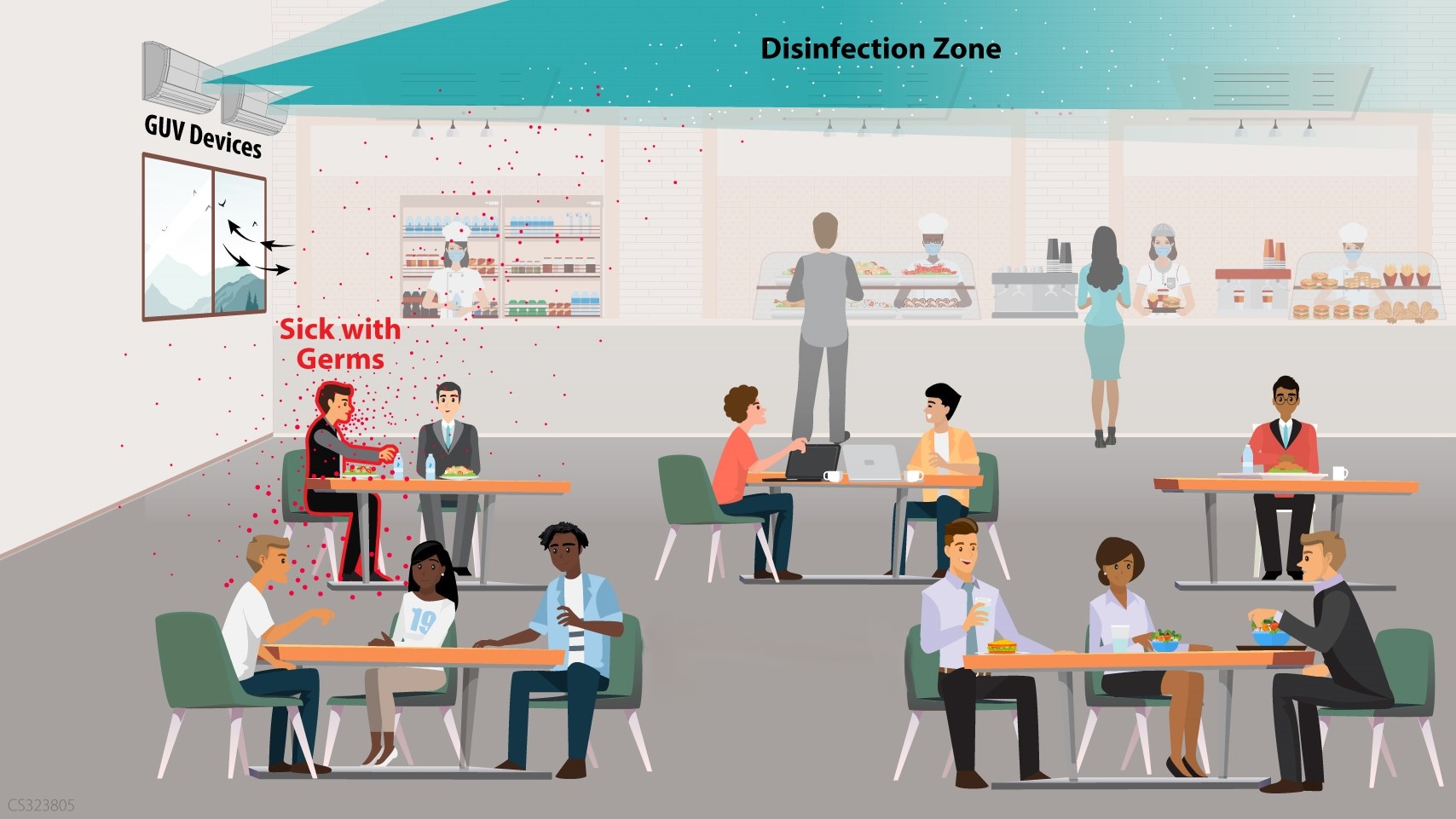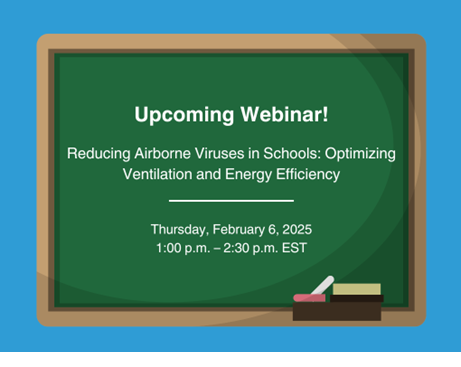Updated January 16, 2025 — The U.S. Environmental Protection Agency (EPA) has released updated guidance on indoor air quality (IAQ) strategies for preventing the spread of common respiratory viruses in homes, schools, offices, and commercial buildings. EPA’s updated guidance reflects the latest science on indoor air quality strategies and recent ventilation recommendations from the U.S. Centers for Disease Control and Prevention (CDC). EPA will also hold a webinar February 6, 2025; see below.
Joseph Goffman, Assistant Administrator for EPA’s Office of Air and Radiation, remarked:
This updated guidance will be a valuable tool in protecting against the spread of common airborne respiratory viruses indoors, where we spend about 90% of our time. In addition to immunizations, handwashing and other key preventive measures, taking action to promote healthier indoor air helps to prevent the spread of respiratory viruses indoors.
The updated guidance outlines how to implement ventilation strategies, such as opening doors and windows, as part of a multilayered approach to prevent the spread of respiratory viruses indoors. The approach includes filtration improvements, such as upgrading the filter in a heating, ventilation and air-conditioning (HVAC) system; using a portable air cleaner; running fans to circulate air indoors; and operating exhaust, window, and attic fans to further reduce the amount of virus particles in the air.
This multilayered approach also addresses the use of air treatment technologies, administrative controls, and cleaning and disinfection practices. The updated guidance also outlines specific strategies and considerations for public indoor spaces, such as schools, offices, and commercial buildings.
View EPA’s updated guidance and learn more:
- Ventilation and Respiratory Viruses
- Preventing the Spread of Respiratory Viruses in Public Indoor Spaces
IAQ background from EPA
Most people are aware that outdoor air pollution can impact their health, but indoor air pollution can also have significant and harmful health effects. Indoor air quality (IAQ) refers to the air quality within and around buildings and structures, especially as it relates to the health and comfort of building occupants. Indoor air quality affects everyone, especially the most vulnerable, including children, the elderly, and people with health conditions like asthma and heart disease.
Understanding and controlling common pollutants indoors can help reduce your risk of indoor health concerns. Health effects from indoor air pollutants may be experienced soon after exposure or, possibly, years later. Indoor pollution sources that release gases or particles into the air are the primary cause of IAQ problems. Inadequate ventilation can increase indoor pollutant levels by not bringing in enough outdoor air to dilute emissions from indoor sources and not carrying indoor air pollutants out of the area.
Respiratory viruses can spread more easily indoors than outdoors since the viral concentration can build up indoors and people are closer to each other. Each year, respiratory viruses are responsible for millions of illnesses and thousands of hospitalizations and deaths in the United States. In addition to the virus that causes Covid-19, there are many other types of airborne respiratory viruses, including influenza (flu) and respiratory syncytial virus (RSV), that can spread more easily indoors than outdoors.
Ventilation and filtration are important components of a multilayered approach for reducing the spread of respiratory viruses indoors. Increasing the amount of outdoor air coming indoors is one of the most important ways to reduce the likelihood that viruses are spread. When it is challenging to enhance the ventilation to a space, consider cleaning or treating the air to reduce virus particles — through filters in your HVAC system or using portable air cleaning devices.
On their own, these individual IAQ strategies are not likely to be sufficient for preventing the spread of respiratory viruses indoors, making it essential to implement each of them in conjunction with other core preventive actions for respiratory viruses recommended by the CDC.
Webinar February 6
EPA will hold a webinar, Reducing Airborne Viruses in Schools: Optimizing Ventilation and Energy Efficiency, on Thursday, February 6, 1:00 p.m. – 2:30 p.m. EST.
Webinar participants will learn how to:
- Apply findings from school air quality research and guidance from the U.S. Environmental Protection Agency (EPA) and Centers for Disease Control and Prevention on ventilation to reduce the spread of airborne viruses and bacteria.
- Provide clean and healthy air in schools while considering energy efficiency by developing a plan to operate, regularly inspect, and maintain HVAC systems, as well as provide outdoor air in accordance with ASHRAE standards.
- Train school facility staff with a new online training co-developed by the U.S. Department of Energy’s Efficient and Healthy Schools Program, U.S. Green Building Council’s Center for Green Schools, and EPA’s Indoor Air Quality (IAQ) Tools for Schools.
- Implement best practices used by an award-winning school district and develop a systematic approach to IAQ management, ventilation, and healthy indoor environments.
Register today for the webinar.







